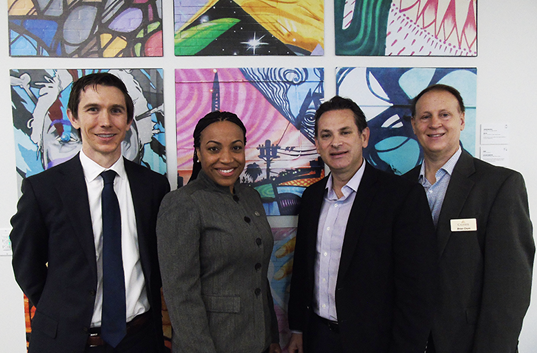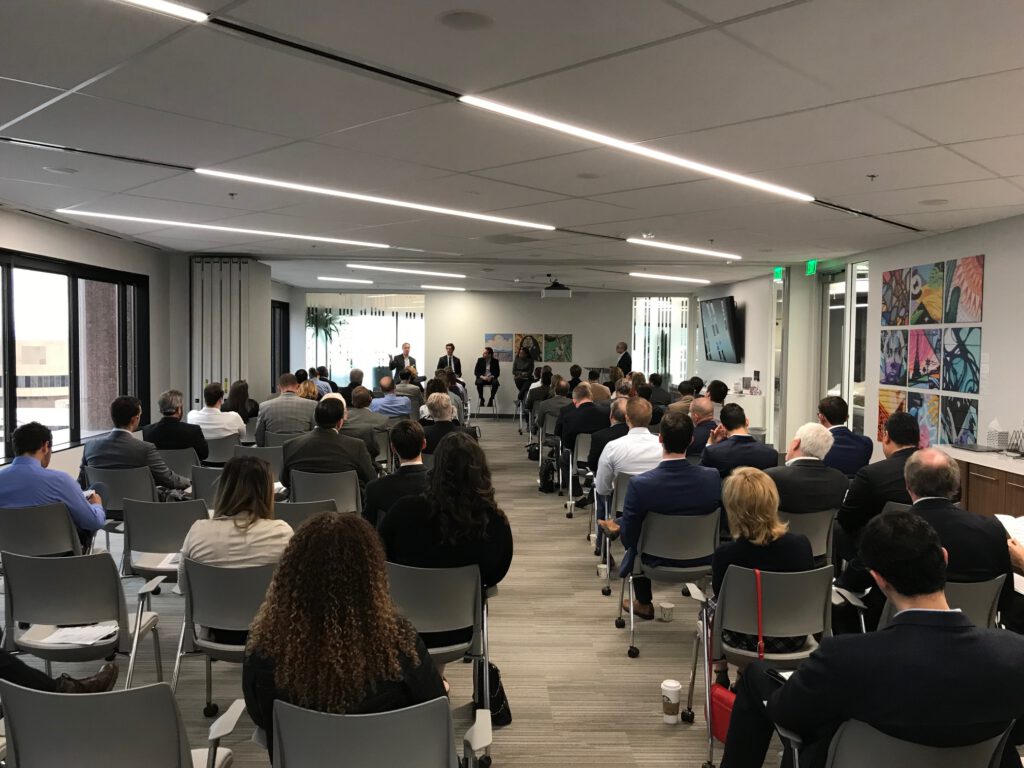

Ambassador event recap: Opportunity zone program
Published: 01/14/2019
Updated: 02/13/2020
Industry experts define Opportunity Zones and how low-income communities could benefit from zone location
As Greater Phoenix develops more opportunities for new businesses, housing, and technology advancements, many are wondering how this growth can reach all communities, including those with lower incomes. Chris Camacho, president and CEO of the Greater Phoenix Economic Council, expressed his interest on this topic during GPEC’s latest Ambassador event.
“Greater Phoenix is once again one of the top markets for technology job growth,” Camacho said. “One thing I am really focused on is how do we ensure that the balance of jobs and the density of jobs is not just tilted to one side of the market?”
The Greater Phoenix Economic Council (GPEC) held an Ambassador event panel featuring industry experts who discussed how Arizona should prevent this community imbalance by utilizing the Opportunity Zone Program. The panel was moderated by Stephane Frijia, senior vice president of strategy and research of GPEC. With more than 60 attendees in the audience, we planned for an interactive and informative conversation.

The Ambassador event panelists included a variety of industry experts: (from left to right) Andy Anderson, an attorney with Spencer Fane LLP, Jonae Harrison, director of equity and special finance services of Chicanos Por La Causa, Marc Schultz, Phoenix partner of Snell & Wilmer, and Brion Crum, vice president of wealth development of Caliber Companies.
How do Opportunity Zones work?
The Opportunity Zone Program was established in December 2017 when the U.S. Congress passed the Tax Cuts and Jobs Act. This program was created as a federal income tax incentive to increase investment and growth in economically distressed communities, also known as Opportunity Zones. Those who invest in an Opportunity Zone will receive tax benefits, and those who invest for 10 years will not be taxed on their capital gains. To create Opportunity Zones, you start with a traditional investment of private capital into Opportunity Funds.
What are experts saying about Opportunity Zones?
The Ambassador event panelists included Andy Anderson, an attorney with Spencer Fane LLP, Brion Crum, vice president of wealth development of Caliber Companies, Jonae Harrison, director of equity and special finance services of Chicanos Por La Causa, and Marc Schultz Phoenix partner of Snell & Wilmer. The panelists’ answers focused primarily on the depth of the Opportunity Zone Program and the impact it could have on local communities.
Crum specifically discussed Caliber’s current and future work with Opportunity Zones. He mentioned how Caliber has invested in Tempe, Mesa and Tucson for three separate projects creating ground-up developments from hotels to sustainable homes.
“We are also looking at how we make sure that our investments are having a community impact,” Crum said. “It is easy to see with a hotel, you are going to create maybe 50 to 100 permanent jobs. If you are creating low-income housing, you are not going to create a lot of jobs, but you are going to create a community benefit for those who are living and working there that maybe couldn’t afford to live there.”
Harrison brought up a new point about how Opportunity Zones are not a singular investment and to look at the program as a project that can affect others around it. She mentioned that “when Chicanos Por La Causa looks at a new development or an investment, we are looking at how we can layer Opportunity Zone investments with other federal funding programs to make this work.”
One of the last questions Frijia asked was, how can Greater Phoenix compete with different regions if they are also developing Opportunity Zones? Crum answered this question by telling the audience to focus on why Greater Phoenix is a great place for people to live and invest.

Over 60 community members, investors and lawyers attended the Ambassador event panel.
What does the future hold for Opportunity Zones?
On October 19, 2018, the U.S. Department of the Treasury and the Internal Revenue Service issued the first round of proposed regulations, and more regulations are expected to follow. In the meantime, the question of measuring this program’s success, how to regulate it, and the future of it is still uncertain. However, the panelists are very optimistic about the potential of Opportunity Zones and what they can provide for the community.
Harrison recommended that investors recognize what kind of social good their developing project could provide to the community. This could include making a building more “green” or providing childcare in new housing.
“It really is our one moment to change the dynamic of how we do business here in Arizona, both economically and socially for this program,” Harrison said.
Are you interested in investing in all aspects of Greater Phoenix to help advance our region? Become an Ambassador – learn more.